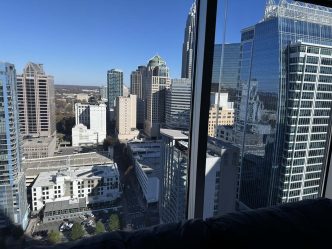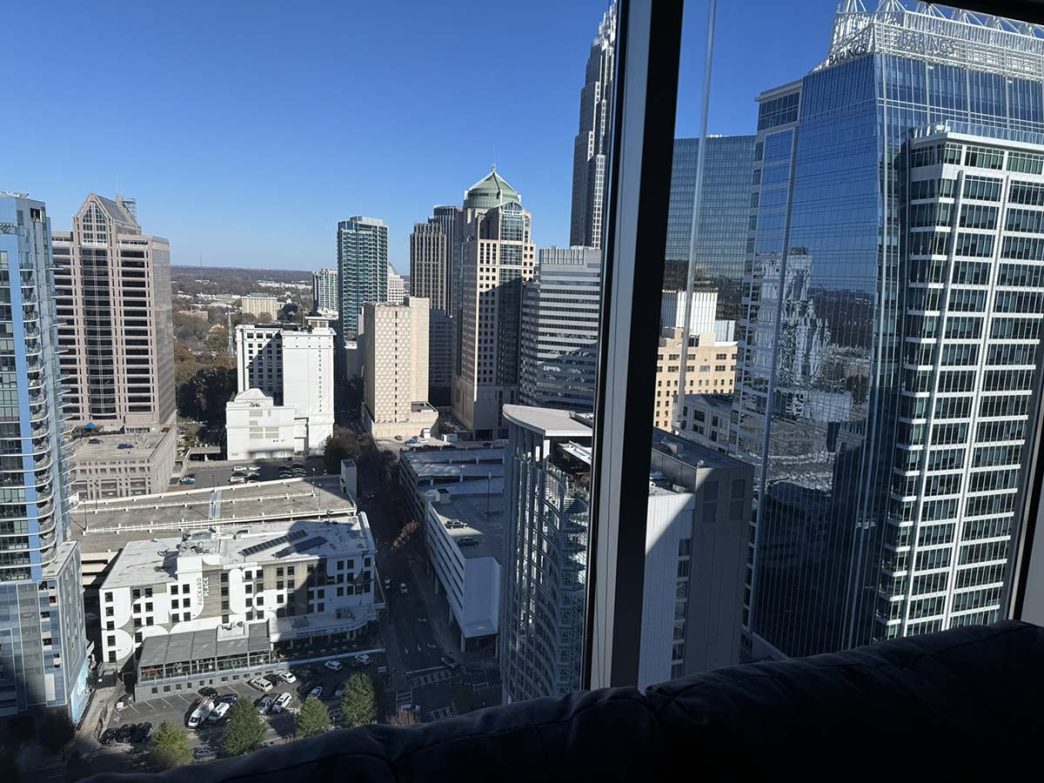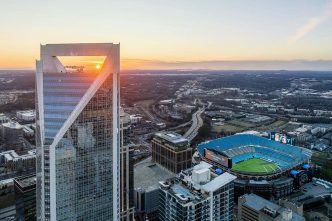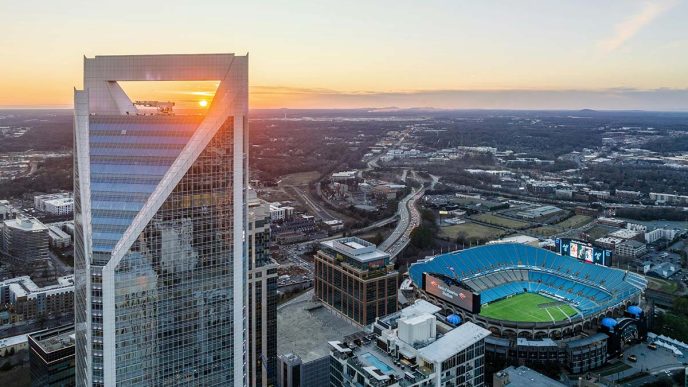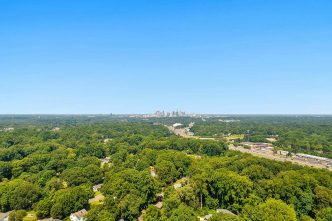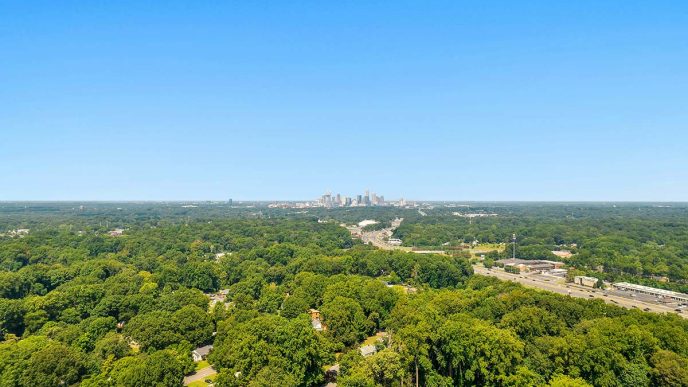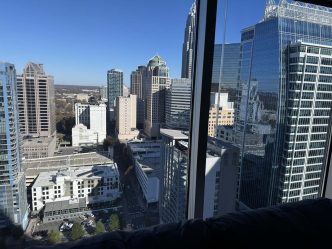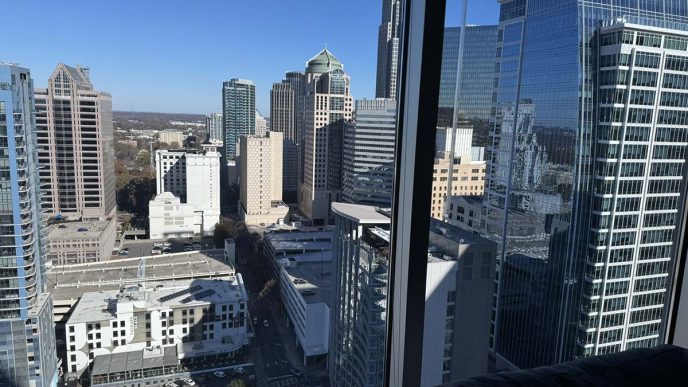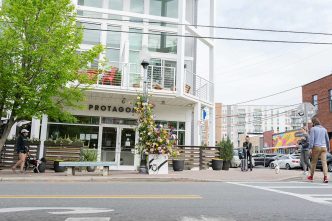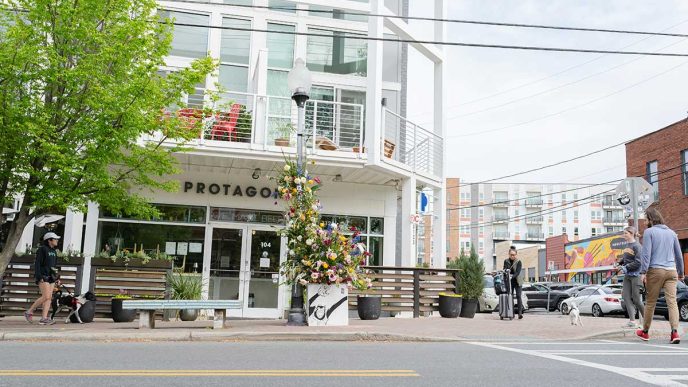I’m standing on a sidewalk in Uptown Charlotte, marveling at the glimmering skyline and the gentle hum of city life that surrounds me. Later the same week, I find myself in Raleigh, strolling through the oak-shaded streets near the city’s downtown core, listening to the soft rustling of leaves. These two North Carolina cities are only about two-and-a-half hours apart, yet each has a distinct personality and appeal. When the question arises of which one to call home, opinions can vary widely. Some speak enthusiastically about Charlotte’s bustling finance scene and growing array of entertainment, while others point to Raleigh’s strong connection to education, tech innovation, and a more laid-back vibe.
Over the course of many visits, I’ve discovered a trove of experiences that reveal what might await you in each location. From cultural museums and scenic parks to local eateries that feel like hidden treasures, Charlotte and Raleigh both have much to share. The decision on where to settle is significant, so let’s walk through highlights and everyday realities that may help bring a bit of clarity.
A Glimpse of Charlotte’s Energy
Charlotte stands tall as North Carolina’s largest city, with its influential financial district and an evolving food and art culture that attracts newcomers from across the country. After grabbing an early morning latte near Trade and Tryon Streets—often considered the city’s core—I’ve found that the morning crowd exudes a sense of purpose. Many are on their way to offices in sleek towers belonging to major financial institutions, while others head off to creative workplaces or city government positions. There’s a sense of momentum that pulses through these blocks.
An Art-Focused Moment
One of my favorite spots for art-lovers is the Bechtler Museum of Modern Art, located at 420 S Tryon St. Doors generally open from 10:00 AM to 5:00 PM, Wednesday through Monday, which offers a convenient window for a midday visit. I still recall the first time I explored its exhibits: geometric sculptures and vibrant works on canvas lined the gallery rooms. I felt as though I’d stumbled upon a cultural gem set against a steel-and-glass backdrop. Nearby, the Mint Museum Uptown offers a rich collection of American and European art, coupled with design-focused galleries that give a broader look at creative expression.
Sports and Entertainment
Charlotte is home to the NFL’s Carolina Panthers and the NBA’s Charlotte Hornets. Attending a game at Bank of America Stadium (800 S Mint St) on a Sunday afternoon can be quite an event, with tailgate gatherings that spill over into the city blocks. Music fans often flock to the Spectrum Center or the outdoor PNC Music Pavilion for major concerts ranging from pop to country. Although game days and concerts do boost crowds downtown, the atmosphere can be fun and unifying, particularly if you enjoy sharing civic pride with neighbors and friends.
Parks and Green Spaces
Marshall Park, just off 3rd Street, offers a quiet retreat if you want a calm lunch break by a small lake, complete with a nice view of the skyline. Meanwhile, Freedom Park (1908 East Blvd), open daily from sunrise to sunset, is a favorite for families, with ball fields, picnic tables, and paved walking paths that give you a chance to stretch your legs.
Dining and Nightlife
The Queen City has a dining culture brimming with new restaurants and bakeries. Stroll through the South End area in the evening, and you’ll come across everything from global fusion spots to modern breweries serving small-batch ales. When I last visited, I made a point to try a new sushi place on South Boulevard that had opened only a few weeks earlier, and it already had a line of enthusiastic customers at the door. Small wonder, since Charlotte’s growth means there’s always a fresh place for dinner or drinks.
Raleigh’s Blend of Tradition and Innovation
Compared to Charlotte, Raleigh typically feels lower-key at first glance, yet its personality runs deep. Tucked into the Piedmont region, Raleigh is recognized for higher education, research, and a tech-driven economy linked with nearby Durham and Chapel Hill—together forming the Research Triangle. But there’s more to the city than academia and scientific pursuits.
Capital City Flair
Raleigh’s status as the state capital means stately buildings, government offices, and the iconic North Carolina State Capitol (1 E Edenton St). On the front lawn, I once joined a tour guide who animatedly pointed out the building’s Greek Revival architecture and explained why it stands as a remarkable example of mid-19th-century design in North Carolina. Inside, you’ll find well-preserved chambers that evoke past legislative sessions, which can be fascinating for history buffs.
Museums and Exploration
Raleigh’s downtown is home to a cluster of museums that offer plenty for curious minds. The North Carolina Museum of Natural Sciences (11 W Jones St) is open from 10:00 AM to 5:00 PM on most days. It’s a remarkable facility containing exhibits on everything from dinosaurs to coastal ecosystems. Just next door is the North Carolina Museum of History, which covers topics such as the state’s indigenous cultures and the evolution of industries through the decades. I still recall turning a corner in the history museum and coming face to face with a large locomotive exhibit that illustrated the growth of rail transport in the region.
College-Driven Culture
North Carolina State University calls Raleigh home. Spend any time around Hillsborough Street or the area known as Cameron Village, and you’ll likely sense the youthful atmosphere that comes from a thriving campus. Cafés buzz with students diving into textbooks, while restaurants serve hearty meals day and night. In my experience, the close connection to local universities brings an ongoing influx of academic seminars, conferences, and other events that keep Raleigh’s intellectual scene active.
Food and Nightlife
The city’s barbecue tradition draws food enthusiasts from far and wide, although you can discover a wide range of cuisines. If you take an evening stroll along Fayetteville Street, you’ll see pubs, international bistros, and breweries that highlight local ales. The stand-out for me is the Raleigh Beer Garden (614 Glenwood Ave), a spot known for housing what feels like an enormous list of on-tap selections. As I once sampled a chocolate porter there, a fellow patron pointed out a few lesser-known breweries worth checking out across the area—a testament to the city’s communal, friendly vibe.
Daily Life and Practical Factors
Those drawn to Charlotte may mention its role as a financial powerhouse, with opportunities in banking, fintech, and corporate leadership. Raleigh is linked to a broad technology and research economy, thanks in part to the presence of Research Triangle Park a short drive away. But it’s not only about the industries. We all have specific needs for housing, transportation, and day-to-day comfort.
1. Housing
Charlotte’s housing market often skews a bit pricier in the urban core. Renovated condos in Uptown and newly-built apartments in areas such as South End command rents that might make you pause if you’re on a tight budget. On the flip side, broad suburban districts like Matthews, Huntersville, or Concord (slightly farther north) can offer more room, sometimes with a backyard. Raleigh’s central neighborhoods near downtown hold some charming historic homes, but you may notice a competitive environment there as well. Suburbs like Cary and Apex, or even Wake Forest to the north, give a variety of choices that can fit different lifestyles.
Key Housing Tips:
- Search listings early in your decision process to get a sense of cost.
- Talk to locals in the specific neighborhoods you find appealing.
- Look into commute times from suburbs during peak traffic.
2. Commute and Transportation
Charlotte’s light rail system, the LYNX Blue Line, extends from its south districts, through Uptown, and then on toward the University of North Carolina at Charlotte. It’s a helpful option if you live or work near its route. Driving can be relatively straightforward, though I’ve experienced rush-hour slowdowns on I-77 and I-85. Raleigh depends more on road networks, though the city has expanded bus routes over the years. The region is also looking at commuter rail proposals. In my own experience, many Raleigh residents rely on a personal vehicle for daily errands.
Commuting Pointers:
- In Charlotte, living near a Blue Line station might reduce parking headaches.
- In Raleigh, see if bus stops or planned transit expansions align with your workplace.
3. Outdoor Recreation
Both cities cater to folks who love the outdoors. Charlotte has Freedom Park, Renaissance Park with disc golf, and the U.S. National Whitewater Center just outside the city for rafting, zip lines, and rock climbing. Raleigh boasts expansive spaces such as Umstead State Park (8801 Glenwood Ave), known for wooded trails and tranquil lakes. The last time I ventured to Umstead, I spent an entire morning hiking and didn’t realize how close I was to the city until I glimpsed the highway through the trees.
Outdoor Highlights:
- Charlotte’s Whitewater Center is open year-round, offering water sports and trail biking.
- Raleigh’s Pullen Park (520 Ashe Ave), open from 10:00 AM to dusk, includes pedal boats, a carousel, and miniature train rides.
4. Cultural Events
Charlotte’s performing arts scene shines at places such as the Blumenthal Performing Arts Center (130 N Tryon St), often hosting Broadway touring shows. Meanwhile, Raleigh’s Duke Energy Center for the Performing Arts (2 E South St) is home to the North Carolina Symphony and Carolina Ballet, delivering a steady calendar of concerts and performances. I enjoyed a holiday ballet performance one December evening in Raleigh—it had a magical quality that made it feel like a classic winter tradition.
Event Resources:
- www.blumenthalarts.org for Charlotte shows.
- www.dukeenergycenterraleigh.com for Raleigh concerts and performances.
Family-Friendliness and Education
Families often examine public school districts, extracurriculars, and general safety. Both Mecklenburg County (where Charlotte is located) and Wake County (home to Raleigh) rank among North Carolina’s top counties in terms of public education resources. There are also sought-after charter and private schools in each city. When my cousin and her family relocated to Charlotte, they took multiple school tours before finalizing the move, settling on a neighborhood near a public magnet school that fit their child’s interests.
Raleigh’s link to higher education offers a wealth of youth programs on local campuses. North Carolina State University, for example, hosts STEM summer camps for middle and high school students. I’ve met families drawn to Raleigh precisely because these kinds of academic pursuits feel within reach.
Family Tips:
- Attend open-house events at schools you’re considering, if possible.
- Look into local parks and children’s museums. Charlotte’s Discovery Place (301 N Tryon St) offers hands-on science exhibits, and Raleigh’s Marbles Kids Museum (201 E Hargett St) does the same.
- Seek out local parent groups on social media for first-hand perspectives.
Food, Breweries, and Local Eateries
Foodies can find delight in both cities. Charlotte’s array of new Southern cuisine has a noticeable presence, with eateries focusing on fresh interpretations of long-standing favorites. Raleigh, on the other hand, has made a name for itself in the barbecue scene and continues to branch out into farm-to-table concepts.
A personal highlight in Charlotte is tasting the weekend brunch dishes at Fahrenheit (222 S Caldwell St, 21st floor), which offers an appealing cityscape view. One morning, I tried a sweet potato pancakes platter, all while gazing out over the sports stadium in the distance.
Raleigh’s Morgan Street Food Hall (411 W Morgan St) gives a wide range of small, locally owned vendors. One Saturday, I grabbed a poke bowl followed by a gourmet donut for dessert, all under one roof. It felt like a communal gathering place, with families, solo diners, and college students enjoying a laid-back afternoon together.
North Carolina is known for its craft beer culture. Charlotte’s NoDa Brewing Company (2921 N Tryon St) is open daily, typically starting around noon, and serves popular picks such as the Hop Drop ‘N Roll IPA. Raleigh’s Trophy Brewing (827 W Morgan St) pairs its pale ales with pizza that many locals rave about.
Food and Drink Recommendations:
- Try a rooftop spot in Charlotte for scenic sips or bites.
- Visit Raleigh’s food halls (Morgan Street or Transfer Co. Food Hall) for variety.
- Sample local craft brews in smaller tasting rooms, which often have friendly staff eager to explain their brew methods.
Community Character
Having experienced the local vibe in both places, I’ve noticed that Charlotte’s constant growth has led to a more cosmopolitan ambience. The influx of newcomers from all over the country (and beyond) shapes a setting where you might find yourself at a coffee shop table next to someone from Seattle, Chicago, or Mumbai. Many come for corporate roles, but they stay for the social and creative prospects that keep popping up.
Raleigh seems more grounded in its academic heritage and small-city sense of togetherness. Neighborhood events, such as local art walks and open-air concerts, benefit from the energy of students, educators, and tech professionals coexisting in close proximity. I once visited a community barbecue event near the Five Points district and found that folks were quick to share their latest restaurant discoveries or weekend trip ideas in the Outer Banks. There is a spirit of collaboration that often shines through in the city.
Personal Observations
My earliest memory of Charlotte dates back to a hot summer day spent walking around the city’s Uptown. I ducked into the Levine Museum of the New South to learn about post-Civil War Southern history. It left me with a lasting impression of how Charlotte has evolved from a textile and banking hub into a multi-layered urban center.
In Raleigh, my favorite recollection involves a quiet Sunday morning stroll through the historical Oakwood neighborhood. The Victorian-style homes, complete with carefully tended porches and gardens, seemed emblematic of Raleigh’s timeless charm. At the local coffee spot, I overheard neighbors chatting about everything from new craft breweries to weekend soccer matches.
Each city left me with a distinct memory tied to its strengths: Charlotte for the dynamic city center and Raleigh for the community spirit that thrives among its green spaces and historic districts.
Deciding Which One Suits You
To zero in on a choice, it helps to lay out your priorities. Do you value walkability and proximity to a major airport? Charlotte’s international hub (CLT) offers numerous flights, which matters if you plan to travel often. Raleigh–Durham International (RDU) is also well-served, though it may have fewer direct routes to certain destinations. If the tech industry or higher learning is your focus, Raleigh might speak more directly to your career ambitions, especially with the presence of the Research Triangle. Those interested in banking or corporate leadership might find more immediate prospects in Charlotte.
Decision-Making Ideas:
- Job Opportunities: Check local job boards to see which city aligns with your field.
- Neighborhood Vibe: Visit and walk around several local areas in each city, if possible. That firsthand sense can’t be overstated.
- Travel Ease: If frequent flights are key, compare airline routes and costs at CLT and RDU.
- Social Circle: Think about your existing connections in each city. If you already have friends or family in one spot, it might make settling in easier.
- Cost of Living: Investigate the price of homes or rentals in neighborhoods that interest you. Factor in property taxes and insurance as well.
Final Thoughts
Charlotte and Raleigh both represent dynamic corners of North Carolina, each with its own rhythm. Charlotte, with its imposing skyline and robust financial sector, appeals to those seeking a faster pace and a downtown that seems to be reinventing itself on every visit. Raleigh, founded on government and university roots, maintains a strong sense of community and intellectual vitality.
Moving from one city to another can involve plenty of excitement mixed with practical challenges, so a little exploration beforehand is often wise. Talk to residents, try a weekend stay in each downtown area, and explore their suburban districts. Stepping foot in these places reveals qualities that facts and figures alone cannot capture.
I like to recall my last trip, when I drove from Charlotte’s energetic Uptown to Raleigh’s tree-lined streets. I had a full schedule of café meetups, museum visits, and parks to see. By day’s end, I was reminded of how different these cities feel while still sharing a North Carolinian foundation of hospitality and growth. If you find yourself weighing them both, trust that you really can’t go wrong. The key is deciding what fits your life best. In the end, each has a worthy story—and each is happy to welcome another newcomer who’s ready to settle down and write the next chapter in that story.
